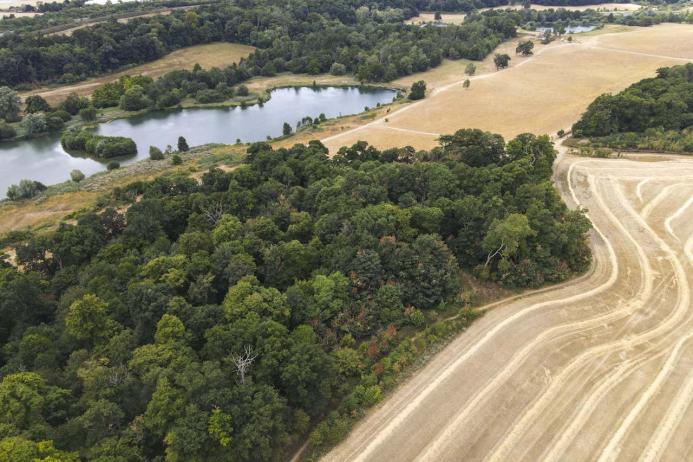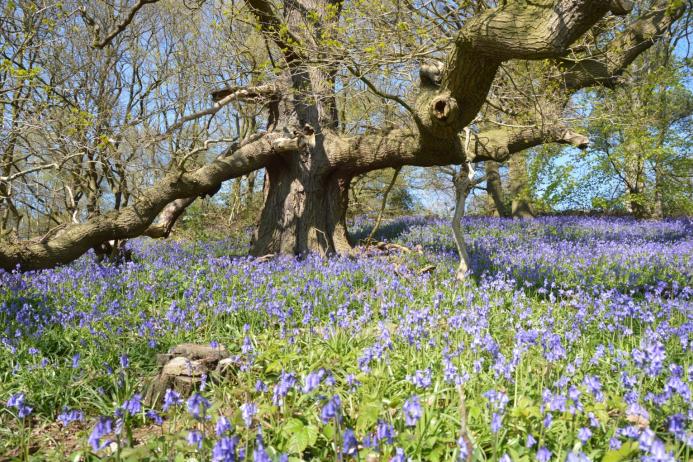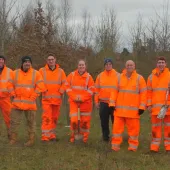Hertfordshire parkland a haven for beetle biodiversity
Panshanger Park identified as one of the UK’s most important habitats for rare beetle species
LEADING ecologists have identified Panshanger Park, in Hertfordshire, as one of the most important habitats for a group of beetles in the UK, including recording a significan number of rare species.
Tarmac and Natural England commissioned EMEC Ecology to carry out the independent survey of saproxylic Coleoptera – beetles which rely on dead or decaying wood – at the company’s Panshanger Park site as part of efforts to further enhance the site’s potential for wildlife.
Two of the species identified have never before been recorded in the county; one is a rare beetle of ancient woodland while the other has only been identified at four other locations in the British Isles.
The survey was completed as part of the Parkland Management Plan, produced in partnership with Natural England, Historic England, and Herts and Middlesex Wildlife Trust to identify how the historic grade II* listed landscape of the park could be further enhanced in the future for both nature and visitors.
Tarmac have owned the Panshanger Park land since the 1980s and from the 1990s carried out phased mineral extraction of sand and gravel in the park, with much of the material being used to build homes and roads throughout Hertfordshire. Quarrying has now ended, with large areas of the park being opened and managed for public enjoyment and conservation.
Tarmac are working with local stakeholders and partners to implement the new management plan, which will include the planting of new parkland trees and increasing the area of wood pasture. Low-intensity grazing will be expanded to enable natural processes to develop a more structurally diverse woodland and tree population and a richer mosaic of habitats.

Michael Charlton, mineral estates manager at Tarmac, said: ‘As stewards of this site, we have taken on a huge responsibility to care for this ancient woodland, which is home to so many rare species and one of the most important places for wildlife in Hertfordshire.
‘This survey is helping us to form our management plans for future years, which will involve carefully managing our veteran trees to ensure these beetles will continue to have a home at Panshanger Park for centuries to come. The abundance of wildlife at Panshanger demonstrates the ability to responsibly quarry and restore an area to create an asset that brings a variety of benefits to flora, fauna and the wider public.’
Sarah Clarkson, team leader at Natural England, said: ‘Panshanger is really exciting because it is such a good example of how nature can co-exist with people and still thrive, so we have a double win. It’s so important that people from all backgrounds and communities can access green space and gain from the benefits to health and well-being that connecting with nature brings.’
Tim Hill, conservation manager with Herts and Middlesex Wildlife Trust, said: ‘Having worked with Tarmac to restore and manage Panshanger Park’s historic landscape for the last 18 years, I am delighted that the value of conserving the vast amounts of rotting wood at the park has been revealed through this excellent study.’
Adrian Dutton, entomologist at EMEC Ecology, said: ‘Panshanger Park is a truly exceptional location thanks to the continuity of decaying wood that has been present for hundreds of years. It is because of this that diverse populations of saproxylic beetles have been able to thrive here, marking it as one of the most important locations in the UK, and potentially Europe.’
The survey contributes to a number of ecological surveys that have been carried out at Panshanger Park. More than 12,000 species have been recorded alongside healthy populations of water voles, bat and 19 species of dragonfly. Tarmac have also recently planted a new 17,000 tree woodland on former agricultural land at the park as part of the Queens Green Canopy initiative.










